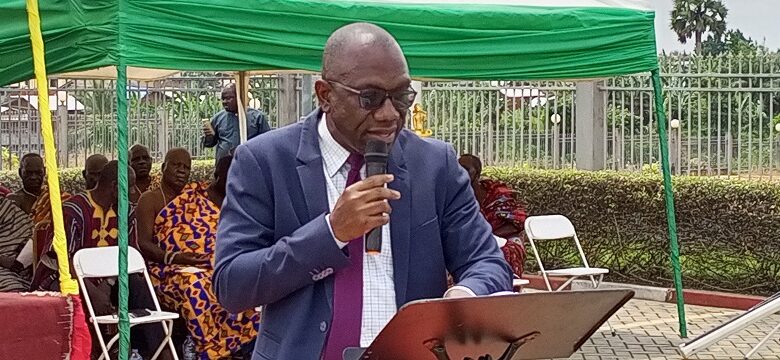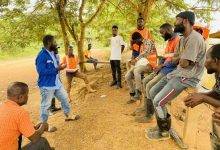
Ghana Export-Import (EXIM) Bank has embarked on a GH¢ 30 million“Coconut for Life” project targeted at increasing the country’s coconut production.
Under the project, 50,000 to one million nuts of the Sri Lankan Green Dwarf crossed to the Vanuatu Tall hybrid variety will be produced in the next five years.
Again, the project will support the Council for Scientific and Industrial Research (CSIR) – Oil Palm Research Institute(OPRI) to establish 120 hectares of coconut seed garden to produce at least one million nuts of the (SGD x VTT) variety annually through hybridisation.
This is targeted at reversing the spread of Cape St. Paul’s Wiltsdisease which has destroyed more than 3,000 hectares of coconut trees in the Western Region and continue to ravage the coconut industry in coastal areas, depriving communities of their livelihoods and increasing poverty.
The Chief Executive Officer, EXIM Bank, Lawrence Agyinsam, disclosed this in an address read for him, at the launch of the 2nd International Coconut Festival at Alabokazo in the EllembelleDistrict of the Western Region on the theme “Repositioning Ghana’scoconut sector for accelerated industrialisation agenda”.
The main event will be held in Accra from September 20-23.
He said, CSIR- OPRI and Ministry of Food and Agriculture(MOFA) and private operators would be contracted to raise the need seedlings from the nuts and sell at discounted prices to farmers to help the country to overcome its major bottleneck in the coconut sub-sector.
MrAgyinsam indicated that, before the project took off in four regions, the bank through CSIR-OPRI and MoFA would rehabilitate eight hectares seed gardens in Menzezor and Bonsaso to ensure that at least 100,000 seed nuts were available to the farmers.
He added that EXIM Bank would closely work with GEPA, CSIR-OPRIand MoFA and the Coconut Farmers and Exporters Association, to ensure the deliverables were achieved.
Meanwhile, the bank, he said, had supported the establishment of a coconut processing factory in Takoradi.
“With an interest in the effective functioning of all parts of the value chain, the EXIM Bank in collaboration with GEPAwould explore export market opportunities for local producers,” MrAgyinsamsaid.
He said “One major lesson learnt from our experiences in financing agro-based industrialisation efforts is that the development of the raw material base is essential. Many agro-based industries are struggling to operate at optimal capacities due to inadequacy of raw materials.”
“We are determined to reverse this narrative by doing everything to remove the bottlenecks to properly reposition the coconut sub-sector for proper industrial transformation, employment and earn foreign exchange,” he said.
Coconut production in Ghana, he noted, had significantly increased over the past decades as the country produced 219,000 metric tonnes( MT) in 1985, 245,000 MT 1995, 315 000 MT in 2005 380,000 MT in 2015 and steadily to 412,000 MT in 2020.
These are cultivated in the coastal savanna and forest zones with annual production of 224 million nuts from an estimated area of 36,000 hectares and that, 80 percent of the coconut holdings were owned by small and marginal holding farmers with remaining 20 percent owned by farming organisations.
In 2007, he said, the price of one fresh young coconut was as low as 20Gp, increasing to 60GP in 2011, and now sold between GH¢2.5 and GH¢3.00 depending on the size.
Meanwhile,the cost of production had remained stable over the eight year period except the cost of transporting the nuts from rural farms to urban centres.
This astronomical increase in price has fuelled demand by an urban populace that has become increasingly aware of the nutritional and health benefits of the coconut, Mr Agyinsam said.
“The booming domestic and foreign market coupled with the favourable soil and climatic conditions make coconut production a major go-to commodity in the government’s target to rake in $25 billion annually from non-traditional exports,” he said.
“This potential is however, challenged by a devastation lethal yellowing disease known as Cape Saint Paul Wilts. This epidemic which began around Cape Saint Paul in Woe near Keta destroyed thousands of coconut palms and caused the collapse of the coconut industry in the Volta Region by mid 1950s. Hence the“Coconut for Life project.”
FROM CLEMENT ADZEI BOYE, ALABOKAZO




